VCAT: Deadly Day at Pine Ridge
- paladintacticalus
- Jul 18, 2021
- 7 min read
Updated: May 8
In our VCAT 2 class, we present a case study centered on the murders of FBI Special Agents Jack Coler and Ronald Williams on the Pine Ridge Indian Reservation in South Dakota. By analyzing this case, five significant learning points have been identified. Some of these lessons serve as the foundation of the VCAT 2 curriculum.
On June 26, 1975, Coler and Williams were searching for Jimmy Eagle who had an outstanding federal arrest warrant. The agents, traveling in separate vehicles, believed they located Eagle's vehicle and begin to follow it. The vehicle led them onto a dirt road and about a 1/2 mile off of Highway 18. near Ogala, South Dakota. The property was known as the “Jumping Bull Compound." The terrain in this area consists of gently rolling grasslands with a few small trees. Below is a view from Highway 18 of the dirt road leading to the former Jumping Bull Compound.*

The agents radioed dispatch that they were stopping a red vehicle. A few seconds later, they radioed that the suspect vehicle had stopped, the occupants had exited, and they were preparing to fire on the agents. The final radio transmission gave the directions to the scene and stated that the agents had been hit. They pleaded that if help didn’t come quickly they would die.
Backup arrived minutes later, but agents and officers were overwhelmed by fire from multiple directions. It would take four hours before the scene was secure and the agents’ bodies could be recovered.
What Happened?
The details below are derived from forensic evidence and witness testimony presented at the trials. See links below for the original sources.
The red Chevrolet Suburban stopped about 250 yards in front of the agents. The occupants (Leonard Peltier, Norman Charles, and Joe Stuntz) exited the Suburban and began firing at the agents (Jimmy Eagle was not present in the vehicle nor on the compound that day). These three men were members of the American Indian Movement (AIM) which had been active in the reservation since the Wounded Knee Occupation of 1973. Peltier, who had traveled from New Mexico, had an outstanding federal Unlawful Flight to Avoid Prosecution (UFAP) warrant stemming from an earlier attempted murder on a police officer in Milwaukee.
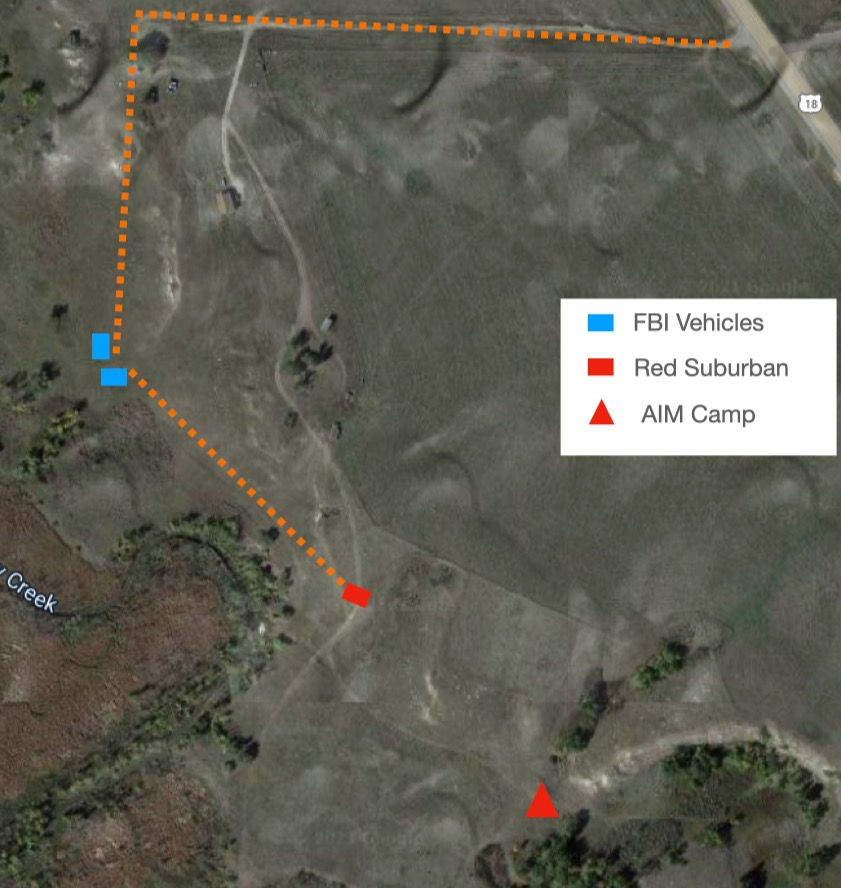
Peltier fired at the agents with his AR-15 rifle while Charles was armed with a “British .308” obtained from an earlier burglary on the reservation. Soon, the three shooters were joined by four additional armed AIM members who had been camping at the "Tent City" on the compound. All together, the seven AIM members fired 125 rounds into the vehicles and 7 rounds into the agents in the 10 minute firefight. At least 114 of those rounds were fired from Peltier’s AR-15.
The post-shooting investigation showed that the FBI agents fired only 5 rounds between them. Williams discharged two rounds from his revolver. Coler fired one round from his revolver, one round from his shotgun, and one round from his .308 rifle. Forensic analysis determined Coler was shot in the arm as he was deploying long guns from the trunk of his vehicle. The rifle round nearly severed his arm, disabling him. He quickly began to lose consciousness from the blood loss.
During the fight, Williams was hit in his side, left arm, and his foot. It appears that Williams removed his shirt after being hit and tried to use it as a tourniquet on Coler’s arm (the shirt placed the Coler’s arm had the bullet holes corresponding to the wounds on Williams’ side and arm).
Since there was little resistance from the agents, three of the shooters (Peltier, with Darrelle Butler and Robert Robideau from the Tent City) approached the FBI vehicles. Peltier with his AR-15 stood over Williams. The agent put his hand up in a pleading gesture, but Peltier shot through his hand and into his head, killing him instantly. Peltier moved toward the unconscious Coler and shot him twice in the head. FBI Special Agents Jack Coler and Ronald Williams are pictured below.

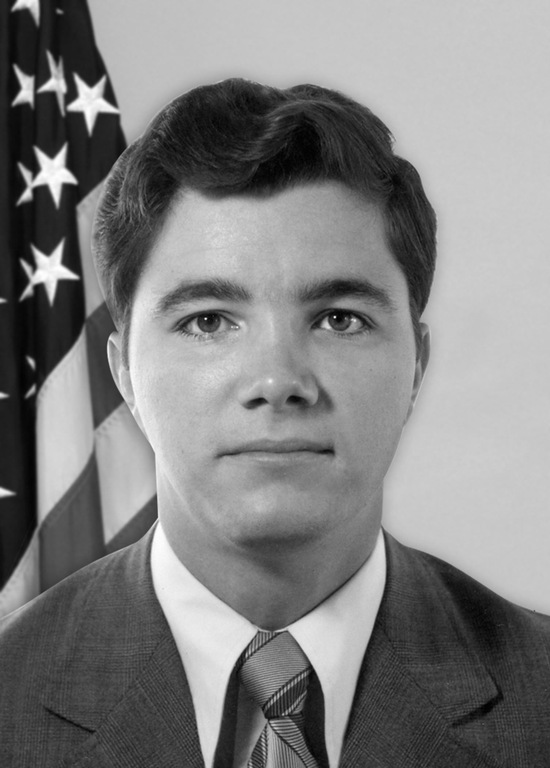
The Aftermath
An FBI raid jacket taken from a Coler’s vehicle was found on Joe Stuntz' body after he was killed by Bureau of Indian Affairs on the compound later that day. The agents' weapons were stolen by the remaining AIM members who fled the scene. Two months later, Coler’s .308 was recovered in a burned out vehicle in Kansas. Along with his .308 was the AR-15 that Peltier used in the killings. In November 1975, Coler’s revolver was found in a car from which Peltier fled. Peltier's fingerprint was found on this revolver. Peltier was eventually convicted of the two murders and sentenced to two life-terms. Robideau and Butler, the two men who approached the vehicle with Peltier, were acquitted in a separate trial.
Lessons Learned
We should be sensitive when critiquing these mens’ actions during this incident. They are unable to explain to us why they took, or didn’t take, particular actions that day. Decision-making under intense fire is difficult. We have the luxury to second-guess decisions while sitting at our keyboards. Nevertheless, it is our duty to learn from these incidents so that the blood spilled is not in vain. Below, I outline five learning points which could be used to better prepare ourselves for this type of attack.
1) Intelligence and the AOR
In the summer of 1975, the Pine Ridge Indian Reservation was a dangerous place. Two years earlier, the Ogala Sioux, along with AIM, initiated the Wounded Knee Occupation at the reservation. This lead to violent clashes with the US government; activists and government authorities engaged in intense firefights with each other over a period of several months. This conflict continued to simmer as crime on the reservation increased. The FBI assigned six temporary duty agents, including Coler, to the reservation to address the problem.
Did the FBI agents know that the Jumping Bull Compound was occupied by violent AIM members? If they knew, was it a prudent decision to drive down that dusty road to follow that Suburban? Given AIM's propensity for violence, I don't believe the agents should have entered the property without a larger presence. If they didn’t know about the AIM Tent City, this intelligence breakdown resulted in a deadly tactical situation.
Officers who patrol rural areas need to establish a strong intelligence network within their Area of Responsibility (AOR). If they have cause to believe a large group of potentially violent actors are present, they should consider backup before entering. Do not place yourself in a situation where you are outgunned and outmanned. Also, consider the risk vs. reward ratio. In this case, agents were attempting to arrest Jimmy Eagle for an assault during the theft of cowboy boots. They entered the "Lion's Den" in search of a mouse. In the absence of threat to life, take the time to gather a superior force before entering into dangerous situations.
2) Disengage When Possible
Williams and Coler radioed that the subjects had exited the car and were beginning to fire. More than likely, the agents were still in their own vehicles when they observed this. In close ambushes, I recommend that that you immediately engage with your handgun to gain fire superiority. However, in “far ambushes,” you may have enough time to escape by simply driving away. In this case, the initial engagement was reported to be at 250 yards and it appears that the attackers were unsophisticated. Based on the bullet strike pattern on Williams’ door below, it appears that most of the rounds fired by the AR-15 were “spray and pray.” This finding is consistent with only 4 of the approximately 130 rounds actually striking the agents at distance. Therefore, if the agents could have stayed in their cars and driven out of the kill zone, they may have survived.
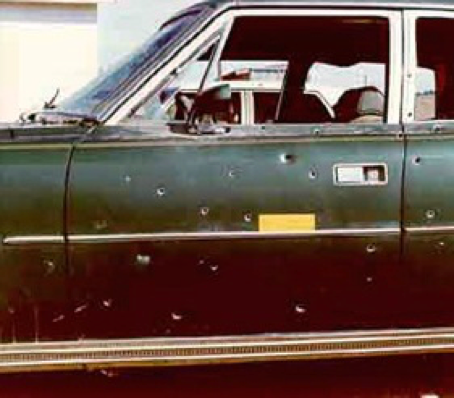
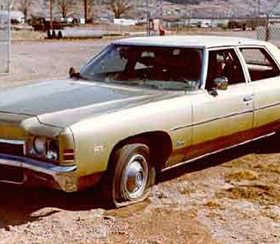
3) Rifle Deployment and Ammunition Considerations
As stated above, Coler received a debilitating wound to the arm as he was accessing the trunk to retrieve his rifle and shotgun. I could not find information that Williams had a long gun in his vehicle that day. In my VCAT 2 classes, I emphasize that officers must be able to quickly deploy a rifle from their vehicle. Most patrol units have locking long gun racks, but special unit officers/detectives in unmarked cars do not have that capability and are at a severe disadvantage. I recommend that unmarked cars have low-profile rifle racks installed behind the drivers seat. In the event of a “far ambush,” officers can bail out of the front seat, open the rear door and access the rifle. I recommend the Grey Man Tactical Rigid Molle Panel system pictured below (contact me for more details and purchasing).
In this case, the dynamics of the gun battle may have changed if their adversaries had been met with effective fire from two rifles. The aggressors may have decided to retreat or not advance on them, giving time for backup to arrive.
In addition, how much ammunition are you carrying? Is it just the one magazine inserted into the rifle? Peltier had at least 4 fully loaded magazines of .223 to engage the agents. I highly recommend a “jump out” bag in the back seat with 6-8 magazines. Always be better armed and carry more ammunition than your adversary.
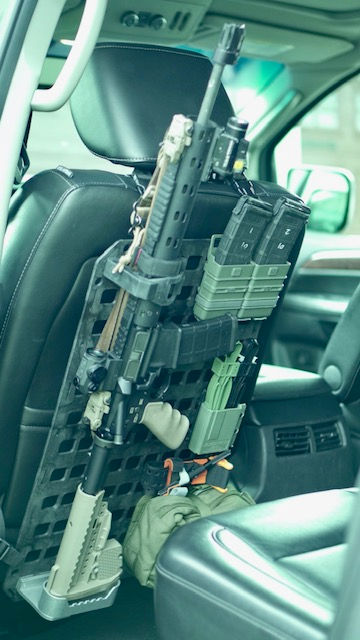
4) Fire-and-Maneuver
Coler and Wiliams were in a difficult situation. They were outmanned 7-to-2 and significantly outgunned. Even if the adversary has an advantage over you, staying static and playing defense behind vehicles will only buy a little time. You’ve got to keep moving - resetting the adversaries’ OODA loop every few seconds.
On the Jumping Bull Compound, the grassy terrain was not favorable for movement; however, there were a few small trees and White Clay Creek about 50 yards to the west of the agents. One possible course of action was to use a “bounding overwatch” technique to get into the trees and the creek bed. Once the attackers lost sight of the agents, this may have forced them to close the distance through the open field, thereby exposing themselves. If the agents were able to establish a “L shape” ambush in the trees, this would have been an optimal position to engage them.
5) Medical Kit and Training
Finally, this case study shows how invaluable tourniquets are for law enforcement. Coler’s devastating wound may have been survivable if a modern tourniquet had been quickly applied, either by himself or by Williams. In many cases, once the bleeding is stopped, the injured officer can still shoot, move, and communicate in a gun battle. It would have been more difficult for Peltier and his associates to approach the vehicles with two men engaging them. While on duty, always have a tourniquet available within arms' reach.
There is a high probability of receiving wounds in a prolonged gun battle; officers must be physically and mentally prepared to continue the fight. Giving up may mean death. In our VCAT 4 class, we focus on fighting with both pistol and rifle when you are injured. We must ramp up our training programs to pressure-test our officers. We must help them survive critical incidents not unlike the one faced by Coler and Williams in that grassy field in 1975.
Resources:
*Location of Jumping Bull Compound determined by author by using published crime scene sketches and Google Maps to find similar topography in the Ogala area.



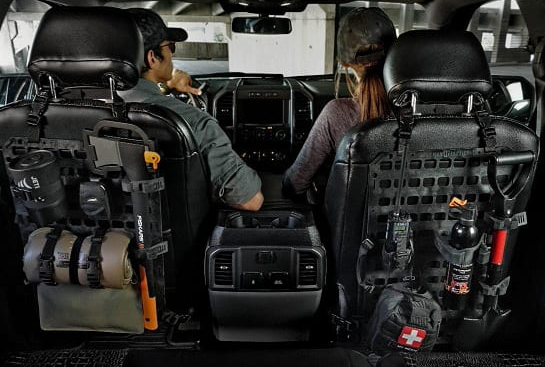
Comments